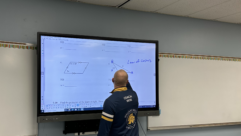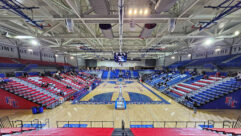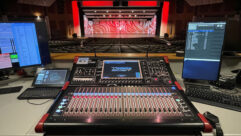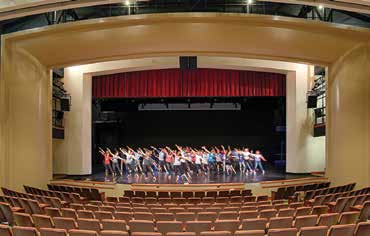

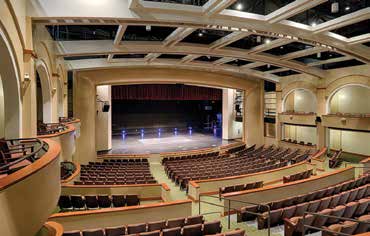
When Palo Alto High School began the process of creating its new Performing Arts Center, Michael Najar, the school’s choral director and chair of the visual and performing arts department, was adamant that the 583-seat theater in the new facility should provide a level of acoustical quality and flexibility that was absent in the aging facility it was replacing.
“Many works of music and theater were created to be heard in a specific acoustical environment in a certain kind of room,” he said. “But there was no way we could build a 16th century stone church, a jazz hall, and a black box theater.”
A Meyer Sound Constellation solution was proposed by Jedd de Lucia and Ian Hunter of the San Francisco-based Shalleck Collaborative, the theatrical and AV consultants for the project. To confirm their recommendations, Najar attended a Constellation demonstration at Meyer Sound’s Berkeley headquarters and also experienced an eclectic variety of music enhanced by Constellation at the San Francisco Symphony’s SoundBox performance venue. “The different acoustical characteristics they could accomplish in the same room was truly unbelievable,” Najar said.
Bill Dohn of Dohn and Associates in Morro Bay, CA worked with the architects to design the room to be optimal for Constellation.
“Initially I had some concerns, as this was the first time I’d designed a room to host Constellation,” he said, “but I am exceptionally pleased with the end result. I was particularly impressed by how the system couples the stage and house seamlessly, giving performers the perception of being in one big room with the audience.”
At the core of the system is a D-Mitri digital audio platform, which hosts the VRAS algorithms for generating the early reflections and late reverberations that define a room’s acoustical characteristics with completely natural effect. Arrayed around the room and over the stage are 24 sensitive miniature microphones for sensing the ambient room acoustics, with a total of 52 full-range loudspeakers and 12 compact subwoofers placed overhead and around the perimeter to replicate the desired aural environment. Using a touch-screen controller, the system operator can select presets optimized for any type of musical performance – from choral and orchestral to small ensemble and big-band jazz – as well as for musical theater, drama, and lectures.
The Constellation loudspeakers employ Meyer Sound’s IntelligentDC technology to provide the sonic benefit of self-powered systems with the installation ease of a single cable carrying balanced audio and low-voltage DC for powering the internal amplifiers. Models represented include UPJunior-XP, UP-4XP, HMS-10, and Stella-4C loudspeakers plus MM10XP subwoofers.
For direct reinforcement, the venue is equipped with a separate Meyer Sound system anchored at the proscenium by four UPQ-1P loudspeakers, with one each left and right and a pair in the center. For delays, fills, sub-bass, and loudspeaker processing, the system also includes two UPJ1P and 16 MM-4XP loudspeakers, two 600-HP subwoofers, and a Galileo 408 processor. The system front end comprises a Yamaha LS9 digital mixing console and a Biamp Tesira DSP and matrixing unit. Installation of both Constellation and direct PA was contracted to PCD Audio-Video System Integration of Santa Rosa, CA.


